PRICING
SERVICES
DIGITAL MARKETING SERVICES
COMPETITIVE ANALYSISSEO SERVICESCONVERSION RATE OPTIMIZATIONWEB DESIGNCONTENT MARKETINGPAY PER CLICKRESOURCES
Adding photos can greatly enhance your local ranking. Visual content boosts visibility in local search results and signals authenticity to search engines. High-quality images improve engagement by making your site inviting and easy to understand. By optimizing images with local keywords and geotags, you enhance discoverability and connect better with your community. Consistent use and analysis of image metrics guide improvements, helping you leverage visuals effectively. Learn how to optimize your strategy further.
In today's digital landscape, visual content plays an essential role in enhancing your local SEO strategy. By integrating compelling images, you can greatly boost your visibility in local search results.
Search engines like Google value relevant and unique images because they signal authenticity and engagement. When you add location-specific photos to your online presence, you help search engines understand your business’s relevance to local queries.
Additionally, images with proper alt text and descriptions improve your chances of appearing in image search results.
Your potential customers are more likely to engage with content that includes visuals. This increased engagement can lead to higher traffic and better rankings.

While optimizing images for search engines is important, focusing on how photos enhance user experience is equally valuable.
When users visit your website, they quickly form opinions based on what they see. High-quality photos create a positive first impression, making your site more inviting. They help convey your brand's personality and allow users to connect emotionally with your content.
Clear, relevant images guide users through your site, making information more digestible and reducing cognitive load. Photos can also clarify complex concepts, helping users understand your products or services better.
When users feel comfortable and informed, they're more likely to stay longer and explore further. In short, photos play a vital role in enhancing the overall user experience on your site.
Images hold a powerful ability to boost user engagement on your website. When you add relevant and high-quality images, visitors are more likely to spend time exploring your pages.
Pictures can capture attention quickly, conveying messages faster than text alone. They create an emotional connection, making your content more relatable and memorable. This increase in engagement can lead to longer site visits and reduced bounce rates, which search engines interpret positively.
Moreover, images encourage social sharing. When visitors find your content visually appealing, they're more inclined to share it with others, broadening your reach.
These shared images can bring new visitors, enhancing your site's visibility. By strategically using images, you can foster a more interactive and engaging online presence, ultimately benefiting your local search ranking.
To harness the full potential of images, it's crucial to guarantee they're optimized for local search. Start by ensuring your images are clear, high-quality, and relevant to your business. Use descriptive file names and alt text that include local keywords; this helps search engines understand your photos and boosts your local visibility.
Keep in mind these tips:
With these steps, you’ll improve your local search ranking effectively.
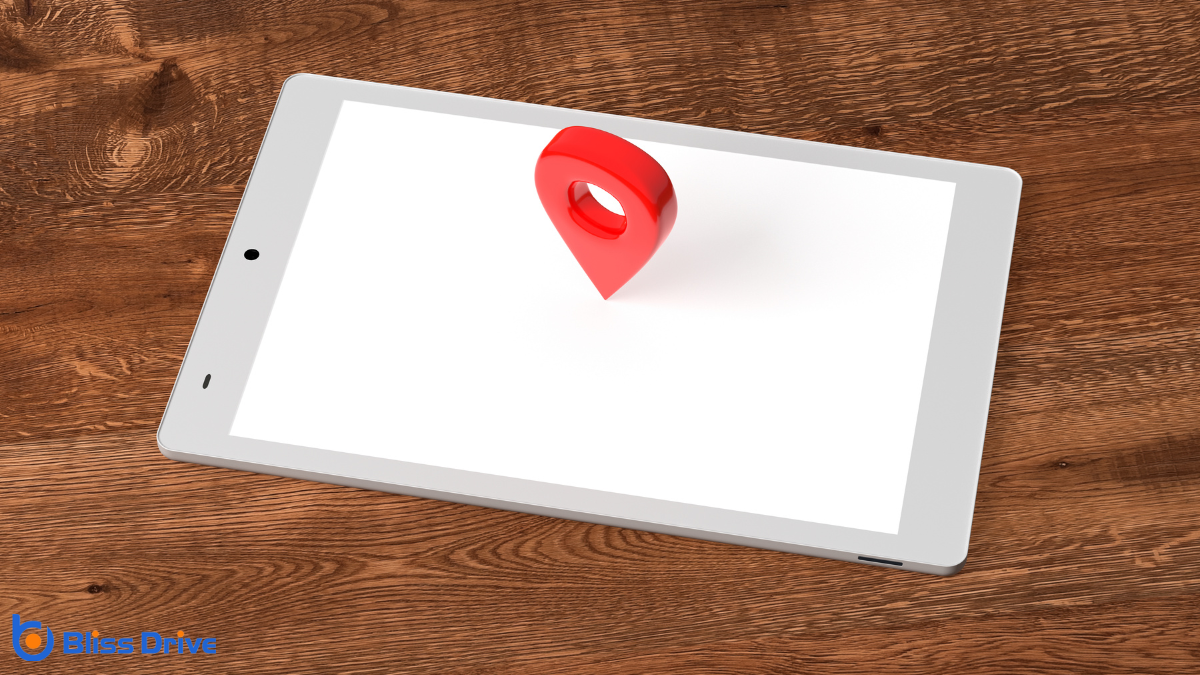
You can greatly enhance your local visibility by using geotagged photos, making your business more prominent in local searches.
These photos don't just attract attention; they also boost engagement rates by connecting with users in nearby areas.
Plus, they improve search accuracy, ensuring your business is shown to the right audience.
When aiming to boost your local visibility, leveraging geotagged photos can be a game-changer. By associating your images with specific locations, you’re signaling to search engines that your business is relevant to that area. This can help improve your local search rankings, making you more visible to potential customers nearby.
Geotagged photos provide context and authenticity, enhancing the appeal of your online presence.
Consider the following benefits:
Using geotagged photos strategically can greatly enhance your local visibility.
Building on the benefits of geotagged photos for local visibility, these images also offer a powerful way to boost engagement rates.
When you use geotagged photos, you’re not just enhancing your local presence; you’re inviting potential customers to interact. Photos tell a story about your business and create a visual connection.
People love visuals, and they’re more likely to engage with posts that include compelling images. Geotagged photos can attract attention and curiosity, prompting users to click, comment, or share.
This engagement signals relevance and popularity to search engines, which can improve your overall rankings. By strategically using these photos, you’re not just showing what you offer—you’re encouraging a two-way conversation with your audience.
While boosting engagement is essential, enhancing search accuracy with geotagged photos can greatly elevate your business's online presence.
Geotagging allows search engines to pinpoint where your photos were taken, aligning them with local search results. This can make your business more visible to potential customers in your area who are searching for services like yours.
To make the most of geotagged photos, consider the following:
Photos play an essential role in enhancing the visibility and appeal of your Google My Business listing. They don't just make your business look more attractive; they also signal to Google that you're actively engaging with your listing. This activity can lead to improved local search rankings.
When potential customers see high-quality images of your products, services, or premises, it builds trust and encourages them to choose you over competitors. Furthermore, photos can increase the time users spend on your listing, which positively impacts your ranking.
Regularly updating and adding new images keeps your profile fresh and relevant. By doing so, you're not only capturing attention but also providing valuable insights into your business, helping potential clients make informed decisions.
To stay competitive in local search rankings, you must understand how your competitors are using images on their Google My Business listings.
Start by checking out their profiles to see what types of images they’re posting. Notice how often they update these visuals and the quality of the photos they use. This assessment will give you insights into what’s working in your industry and what you might improve.
Here’s what to look for:
Analyzing these strategies helps refine your approach, ensuring you stay ahead.

When curating high-quality images for your Google My Business profile, focus on clarity and relevance to make a lasting impression. Choose images that are sharp and well-lit, showcasing your business’s unique features. Avoid cluttered backgrounds and guarantee the subject is the focal point.
Use consistent branding elements like logos or color schemes to create a cohesive look. Consider capturing a mix of wide shots and close-ups to give viewers a thorough understanding of what you offer.
Authenticity matters, so feature real people and genuine scenes from your business environment. Regularly update your images to keep them fresh and engaging, reflecting any changes or new offerings.
To understand how photos influence your local ranking, you'll need to analyze their impact carefully.
Check how metrics like click-through rates and time spent on your page change after adding images.
Also, monitor engagement rates to see if your audience interacts more with your content when photos are included.
Photos wield significant influence over local ranking, acting as a visual magnet that attracts user engagement and boosts visibility. When you add photos, search engines notice, and so do potential customers. They’re more likely to click on listings with appealing images, which signals relevance and quality to search algorithms.
To understand their impact, examine how photos improve user interaction and engagement.
Evaluating the effectiveness of photos on local ranking involves analyzing specific metrics that indicate how well your images are working for you.
Start by looking at your local search visibility. If your business is showing up more often when people search for local services, your photos might be making a difference.
Check your click-through rate (CTR) too. When users click on your listing more frequently, it suggests your images are attracting attention.
Another metric to watch is the number of views your photos receive. Increased photo views can signal that people find your images engaging.
Also, consider any changes in customer actions, like calls or direction requests, as these can reflect how your photos contribute to your local presence.
While understanding engagement rates, you’ll find they offer invaluable insights into how effectively your photos are enhancing your local ranking. Engagement rates reveal how users interact with your photos, showing you what's working and what needs tweaking.
By analyzing these metrics, you can refine your strategy and boost visibility. Consider focusing on:
Paying attention to these metrics helps you understand your audience better and refine your content for more effective results.
With the right adjustments, you’ll see a positive impact on your local ranking.
Adding photos can greatly boost your local ranking by enhancing your online presence. When you optimize images for local search and leverage geotagged photos, you increase engagement and improve user experience. Competitors might already be using this strategy, so analyzing their approach can offer valuable insights. By curating high-quality images and regularly updating your Google My Business profile, you'll effectively capture attention and drive more local traffic. Start integrating visuals today to see measurable results.
You're looking to boost your local SEO, and a Google Business Profile is your best friend. It enhances visibility in local searches by providing consistent, accurate business information. Enticing visuals like photos and videos grab attention, while customer interactions through reviews and posts build trust. Engage with insights and optimize categories to stay relevant. If you're keen to discover more techniques that might enhance your strategy, you're in the right place.
When you're looking to enhance your business's online presence, understanding the basics of a Google Business Profile is essential. This free tool allows you to manage how your business appears on Google Search and Maps.
Start by creating or claiming your profile. Enter accurate business information like name, address, and contact details. Upload high-quality photos to showcase your products or services, making your profile more attractive to potential customers.
Encourage customers to leave reviews, as they build credibility and trust. Respond promptly to reviews to show engagement. Keep your business hours updated and post regularly about offers or events to stay relevant.
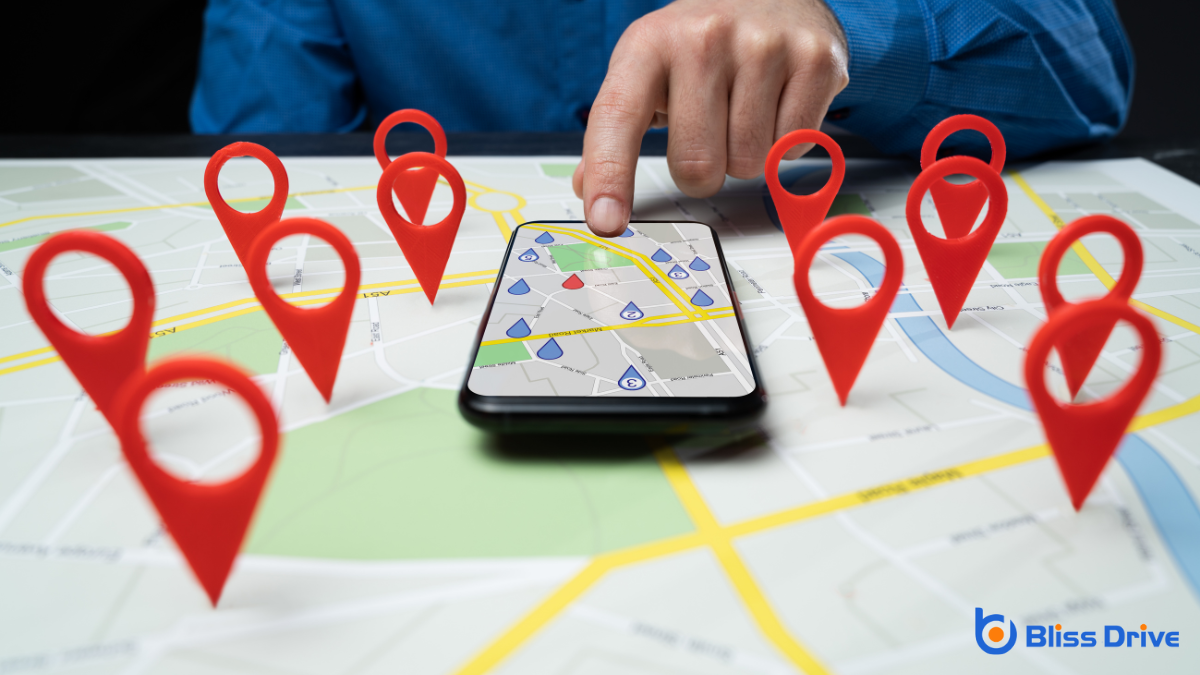
While optimizing your online presence, it’s crucial to understand how your Google Business Profile can greatly impact local search rankings. This profile serves as a critical factor in how search engines determine your business's relevance and proximity to potential customers.
By keeping your profile updated and engaging, you can enhance your visibility in local searches. Your profile's completeness, including business categories, photos, and customer reviews, directly influences your ranking.
Google uses this information to match search queries with the most relevant businesses. Encourage customers to leave positive reviews and respond promptly to them; this engagement boosts your credibility and search performance.
Stay consistent with your profile details across the web. This consistency helps build trust with search engines, improving your local search presence considerably.
Accurate business information isn't just beneficial—it's essential for your Google Business Profile's success. When your details are precise and up-to-date, customers trust you more.
Imagine someone searching for your services; if they encounter inconsistent data like wrong addresses or phone numbers, they might choose a competitor instead. Maintaining correct information guarantees your potential clients find you easily and boosts your credibility.
Moreover, Google's algorithm values reliability. Consistent information across online platforms signals trustworthiness, enhancing your local SEO. This means that when your business details align everywhere, Google is more likely to recommend you to nearby users.
Beyond ensuring accurate business information, your Google Business Profile benefits from a carefully crafted business description and smart category selection. A clear, concise description tells potential customers who you are and what you offer.
Focus on what makes your business unique, using relevant keywords naturally to enhance visibility in local searches.
When it comes to categories, choose ones that precisely reflect your offerings. This helps Google understand your business and match it with relevant searches. Avoid overloading with multiple categories; stick to those that best represent your core services.
Keep your description and categories updated as your business evolves. By doing so, you’ll stay relevant and maintain your competitive edge in local search results, helping attract more customers to your doorstep.

To truly captivate your audience and boost engagement, incorporate high-quality photos and videos into your Google Business Profile. Visual content grabs attention and helps potential customers connect with your brand.
Start by showcasing your products, services, or the unique aspects of your business. Use photos that are clear and well-lit, and avoid cluttered backgrounds.
Videos provide an even richer experience. Consider creating short clips that highlight your business’s story, introduce team members, or demonstrate product usage.
Consistently updating your visuals keeps your profile fresh and engaging.
Harness the power of customer reviews to elevate your Google Business Profile and boost local SEO. Encourage satisfied customers to leave positive reviews by simply asking them or providing easy links.
These reviews build trust and credibility, influencing potential customers and search engine rankings alike. Responding to reviews, whether positive or negative, shows that you value customer feedback and are committed to improving their experience.
When you address issues raised in negative reviews, you demonstrate excellent customer service, which can convert unhappy customers into loyal ones. Keep your responses professional and prompt, enhancing your reputation.
Although many businesses overlook it, leveraging Google Posts can greatly enhance your visibility in local search results. By regularly updating your Google Business Profile with compelling posts, you can engage potential customers directly in search results.
Share promotions, events, or updates to keep your audience informed and interested. Each post acts like a mini-advertisement, grabbing attention and showcasing your business’s uniqueness.
To maximize their impact, guarantee your posts are visually appealing and include relevant keywords. This approach not only boosts engagement but also signals to Google that your business is active and relevant, which can improve your rankings.
Stay consistent with your posts, and you'll find they become a powerful tool in driving local traffic and increasing your business's visibility.

Building on the momentum from using Google Posts, focusing on attributes can further highlight your business's unique features. Attributes let you showcase specific aspects of your business, making it stand out to potential customers.
For instance, include details like wheelchair accessibility, free Wi-Fi, or pet-friendly spaces. These small yet significant details can influence a customer's decision to choose your business over competitors.
To use attributes effectively, regularly update them to reflect any new features or changes in your services. Verify you're selecting attributes that genuinely represent your business.
Accurate attributes not only enhance your profile's credibility but also improve your visibility in local search results. By consistently updating these details, you help customers find what they're looking for quickly and effortlessly.
To effectively track your business's performance, you'll want to focus on user engagement metrics and search visibility trends.
By analyzing how users interact with your profile, you can identify areas for improvement and capitalize on what's working.
Keep an eye on search visibility to understand your local reach and make informed decisions to boost your online presence.
How do you know if your Google Business Profile is truly effective? By analyzing user engagement metrics, you’ll get valuable insights into how potential customers interact with your business online.
Look at metrics like clicks, calls, and direction requests to gauge interest. Pay attention to customer reviews and the frequency of interactions. These metrics tell you which aspects of your profile attract or deter users.
Don't overlook photo views and the types of searches leading to your profile. High engagement usually indicates a well-optimized profile, while lower numbers might suggest areas for improvement.
Regularly monitoring these metrics helps you make informed decisions, tweak your content, and guarantee your profile remains appealing and relevant to local searchers. This approach ultimately boosts your local SEO efforts.
Understanding how your business appears in local search results is essential for effective local SEO. You've got to keep an eye on your search visibility trends to see where you stand and how you can improve.
Start by using the insights and analytics available in your Google Business Profile. These tools help you track how often your business shows up in search results and how users interact with your profile.
Identify patterns in your visibility. Are there specific times or days when your business is more visible? What search queries bring up your profile? Use these insights to tailor your SEO strategy.
If you notice dips in visibility, it may be time to update your listing or adjust your keywords for better performance. Remember, staying informed is key!
When managing multiple locations for your business, Google Business Profile becomes an essential tool to ensure each location is accurately represented and easily found by customers.
Start by creating a separate profile for each location. Make certain that every profile contains precise details like address, phone number, and operating hours. Consistency is key, so keep information uniform across profiles to avoid confusion.
Use location-specific keywords in the descriptions to enhance local search visibility. Respond to reviews promptly and engage with customers to build trust. Regular updates and posts will keep each profile vibrant and relevant.
Utilize the insights feature to monitor how customers interact with your profiles. This data helps you make informed decisions on how to improve visibility and customer engagement.
By effectively managing your Google Business Profile, you can markedly boost your local SEO efforts. Make certain your business information is accurate and up-to-date to build trust with potential customers. Optimize your business description and categories, and use photos and videos to engage your audience. Don’t forget to leverage Google Posts and highlight unique attributes to stand out. Regularly monitor insights and analytics to track your performance and make necessary adjustments for continued success.
Customers find your Google Business Profile through targeted local SEO, utilizing relevant keywords and consistent contact details. Ensuring your business information, like name, address, and phone number, is accurate and using location-based keywords boosts visibility. Optimizing your Google Business Profile and appearing on Google Maps elevates your reach. Encouraging customer reviews and enhancing your profile with quality images increases attractiveness. Monitor insights to understand search queries and customer interests. Discover more strategies to maximize your online presence.
Local SEO is vital for any business wanting to thrive in its community. By focusing on local search optimization, you boost your visibility to nearby customers actively seeking your services. When people search for businesses like yours, they typically include location-based keywords.
If you’re not optimizing for local search, you’re missing out on potential customers right in your area.
Start by optimizing your website with your city and region keywords. Confirm that your business name, address, and phone number (NAP) are consistent across all platforms. This consistency is essential for search engines to identify and rank your business correctly.
Additionally, encourage satisfied customers to leave positive reviews, as they greatly impact your local search rankings. Remember, local SEO connects you directly to your community.
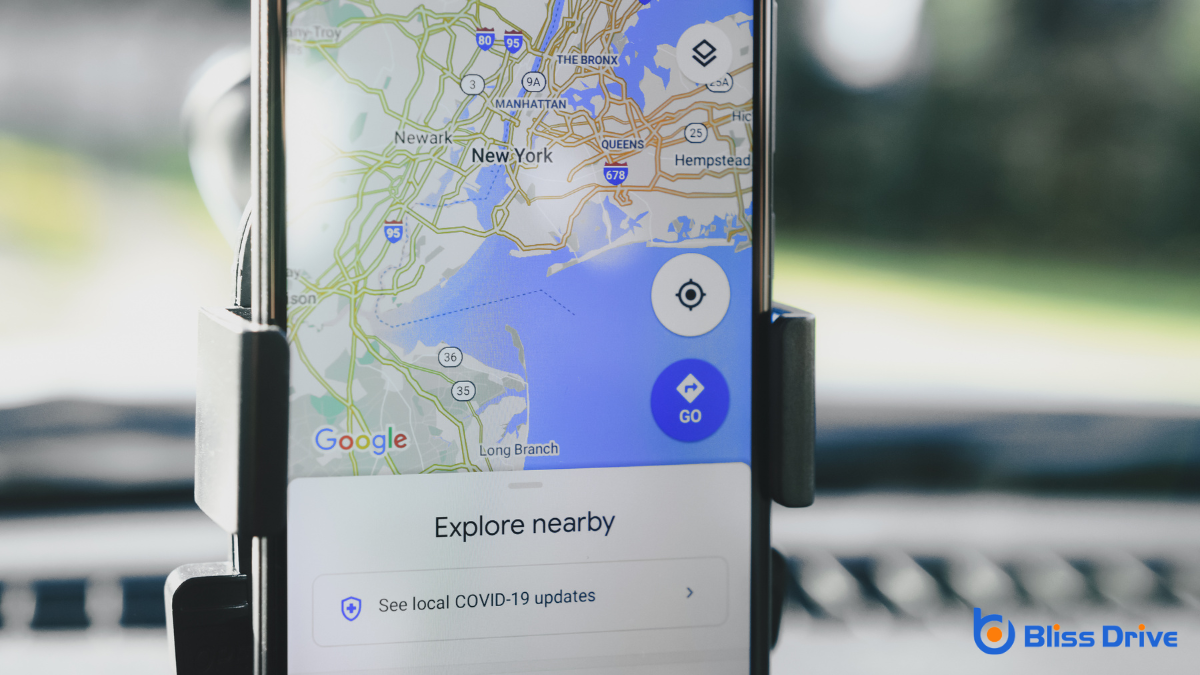
To make the most of Google Maps, focus on how your business appears in location-based search results.
You’ll want to guarantee your business stands out in the Map Pack by optimizing your profile with accurate details. This not only boosts visibility but also helps potential customers find you easily.
Imagine you're on the hunt for the best coffee shop in town; Google's location-based search results can quickly point you in the right direction using Google Maps.
When you perform a search, Google tailors the results based on your current location, showing businesses nearby. This means your Google Business Profile is more likely to appear to customers in your area when they're searching for products or services you offer.
To optimize your presence, keep your business address accurate and verify it's confirmed in your profile. Local keywords in your description can also enhance visibility.
When users search for businesses on Google Maps, the Map Pack often includes three prominent results that catch the eye.
These results are vital because they’re usually the first thing potential customers see. Appearing in this Map Pack can greatly enhance your visibility and drive traffic to your business.
To be featured, your business needs to be relevant to the search query, and your location should be within the search radius. The competition is tough, so make certain your Google Business Profile is active and engaging.
Pay attention to your customer reviews and ratings, as they influence your ranking. By staying active and maintaining a good reputation, you increase your chances of being one of those top three businesses.
A crucial step in enhancing your Google Business Profile's visibility is optimizing your business details on Google Maps. Start by ensuring your business name, address, and phone number are accurate and consistent across all platforms. This consistency helps search engines trust your information, boosting your profile's ranking.
Add business hours, categories, and a detailed description with relevant keywords to improve searchability. Include high-quality images that represent your business, as visuals attract more attention. Encourage customers to leave reviews, respond promptly, and address any feedback. This interaction shows you're engaged with your audience.
Regularly update your profile with new information, offers, or events to keep it dynamic. By actively managing these elements, you increase your chances of appearing prominently in local searches.
To make your business stand out in Google search results, focus on optimizing local SEO by incorporating relevant keywords.
Ascertain that these keywords reflect what your customers are searching for and are naturally integrated into your website content.
Boosting your local SEO is essential if you want to stand out in Google search results and attract nearby customers. Start by making certain your Google Business Profile is complete and accurate. This means verifying your business address, phone number, and hours of operation.
Consistency is key, so double-check your information across all platforms.
Here are some tips to optimize your local SEO:
Keywords are the backbone of your online presence, and using the right ones can make a significant difference in how easily potential customers find you. Start by identifying terms that best describe your business, products, or services.
Think about what your customers might search for when looking for a business like yours. Use tools like Google Keyword Planner to discover popular search terms and incorporate them into your Google Business Profile.
Focus on long-tail keywords, which are more specific and less competitive, to attract the right audience. Regularly update your profile to reflect changes in your offerings or market trends.
Don’t forget to include keywords in your business description, posts, and reviews. This practice boosts your visibility in search results, making it easier for customers to connect with you.
When crafting your Google Business Profile, incorporating carefully selected keywords and optimized content is essential for improving visibility and attracting potential customers.
You want to make sure your business stands out, and optimizing content plays a vital role in this. Keywords help search engines understand what your business is about, increasing the chances of being found by those searching for services like yours.
Here's how you can do it effectively:
Keep these tips in mind, and you'll be on your way to a more discoverable profile!

Although creating a well-optimized Google Business Profile is essential, encouraging customer reviews can greatly enhance your online presence and credibility.
Reviews provide social proof and help potential customers trust your business more. To get more reviews, make it easy for customers to leave feedback by sharing a direct link to your review page. You can include this link in follow-up emails or on your website.
Politely ask satisfied customers to share their experiences, and respond to reviews promptly to show you value customer feedback.
Have you ever considered how much impact visuals can have on your Google Business Profile? They’re often the first thing potential customers notice.
High-quality photos and videos can make your business stand out and attract more attention. Here’s how you can enhance your profile’s visual appeal:
Engaging with your customers through posts and updates on your Google Business Profile can greatly boost your business’s visibility. Regularly sharing news, promotions, or events keeps your audience informed and interested.
Use posts to highlight special offers, new products, or timely updates about your services. Short, engaging content grabs attention and encourages interaction.
Keep your updates relevant and timely, addressing current trends or local events to connect better with your community. Encourage customers to share their experiences and feedback on your posts.
This interaction not only builds relationships but also enhances your profile’s visibility.

How can you make the most of your Google Business Profile? Monitoring insights and analytics is key. By diving into the data, you can understand how customers find and interact with your profile. This information helps you make informed decisions to boost your visibility and customer engagement.
Here’s how you can utilize these insights:
By focusing on local SEO, you’ll make your Google Business Profile more visible. Use Google Maps and search results to your advantage, and don’t forget to incorporate relevant keywords and optimized content. Encourage customer reviews to build trust, and enhance your profile with appealing photos and videos. Engage with your audience through regular posts and updates. Finally, monitor insights and analytics to refine your strategy. By doing so, you’ll attract more customers and grow your business.
To verify your Google Business Profile, you can use several methods: request a postcard, receive a phone call, or opt for email to receive your code. Instant verification is also possible through Google Search Console, while video call verification connects you with a Google rep live. Bulk verification is available for businesses with multiple locations. Troubleshooting tips are handy if things don't go smoothly. Curious about more details? There's plenty to uncover.
Verifying your Google Business Profile is essential because it establishes your business's legitimacy online and enables you to control the information displayed to potential customers.
When you verify your profile, you’re telling Google that you’re the rightful owner of your business. This not only boosts your credibility but also enhances your visibility in search results.
Customers trust verified businesses more and are more likely to engage with you. By taking control of the information, you guarantee that your address, hours, and contact details are accurate and up-to-date.
An unverified profile may lead to misinformation, confusing potential clients. Verification is a simple step with significant impact, fostering trust and driving more traffic to your business, both online and offline.

To verify your business by postcard, first request the postcard through your Google Business Profile dashboard.
After submitting your request, keep an eye on your mailbox as the postcard usually arrives within five days.
Once it’s in your hands, follow the instructions on the card to complete your verification.
When you're setting up your Google Business Profile, one effective way to verify your business is by requesting a postcard. This method guarantees that Google recognizes your physical location.
To initiate this process, follow these steps:
This postcard will include a unique verification code.
It's essential to double-check your address details so you receive the postcard without delay. Following these steps helps guarantee your business gains visibility on Google Maps and searches.
After requesting your postcard for business verification, keeping an eye on its delivery is the next step. You’ll want to guarantee it arrives safely, as it contains the verification code needed to confirm your business.
Typically, the postcard should arrive within five days, so keep a close watch on your mailbox. If it doesn't arrive within this timeframe, it might be delayed due to postal service issues or incorrect address details.
To track its status, log into your Google Business Profile account. If your postcard hasn’t arrived after 14 days, you can request a new one by following the re-verification process.
Always double-check your address for accuracy before requesting again. Timely verification helps your business appear on Google Search and Maps, boosting your online presence.
When you're ready to verify your Google Business Profile by phone, you'll receive a call with a verification code.
Make sure to enter this code promptly to confirm your business information.
If you encounter any issues, there are simple troubleshooting steps to help resolve them quickly.
While verifying your Google Business Profile, opting for the phone call method is a straightforward and efficient choice. You'll need to make certain that your business phone number is up-to-date and accessible. When you're ready, Google will call the number provided to deliver a unique verification code.
To prepare for this process, keep in mind the following:
Once you receive the call, you'll be one step closer to completing the verification process.
Having received your verification call, it’s time to enter the verification code. First, make certain you've noted the code correctly as it’s read to you over the phone.
Then, sign in to your Google Business Profile account. Locate the section where you're prompted to input the verification code. This is typically found on the verification page you accessed when you started the process.
Carefully type in the code exactly as given and submit it. If everything matches, Google will verify your business profile instantly.
Keep in mind, you need to complete this step quickly, as the code can expire. Entering the verification code correctly guarantees your business gains all the benefits of being verified by Google.
Although phone call verification is a straightforward method, you might encounter some hiccups along the way. Guaranteeing a smooth process requires addressing potential issues that could arise.
First, confirm that the phone number listed on your Google Business Profile is accurate and active. If you don't receive the call, check your call settings, as some phones block unknown numbers automatically.
Consider the following steps to troubleshoot common problems:
These steps help guarantee successful verification.
To verify your Google Business Profile through email, start by ensuring that the email address listed for your business is correct and accessible.
After confirming this, log in to your Google Business Profile account and select the option for email verification. Google will send a verification email to the specified address.
Check your inbox, including your spam folder, for the email. Once you receive it, simply click on the verification link provided within the email. This action confirms your ownership and completes the verification process.
If you don't see the email, wait a few minutes or request a new one. Remember, email verification is quick and convenient, providing you with a seamless way to authenticate your business profile.
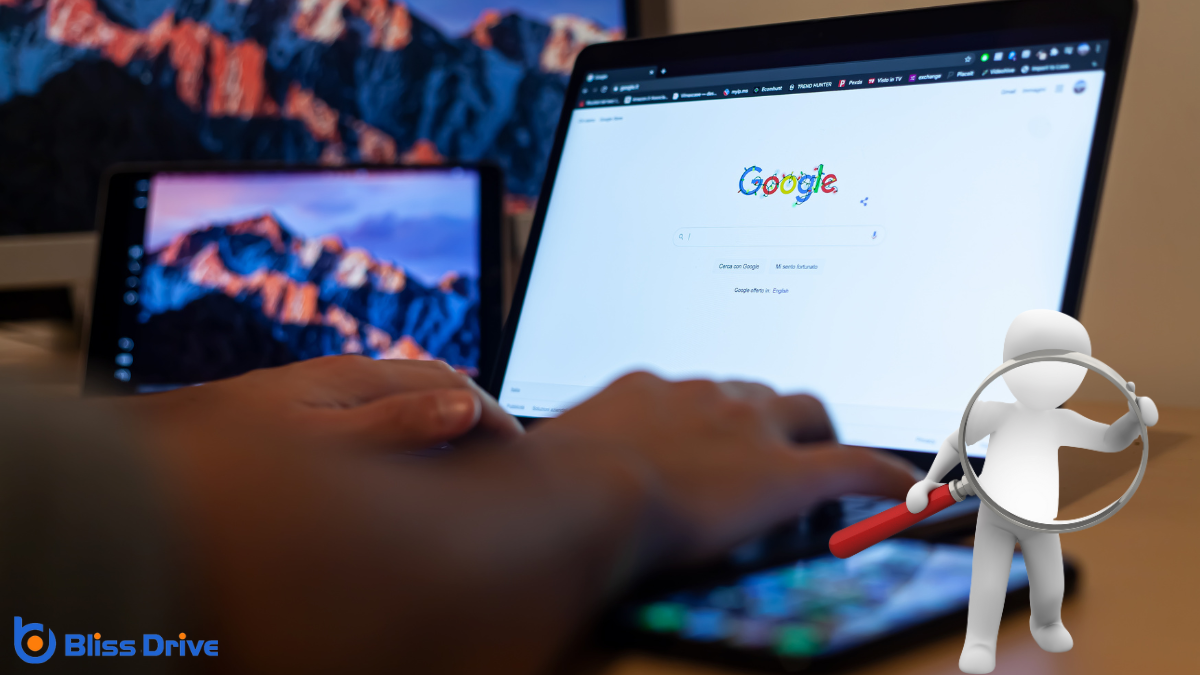
When you already have your website set up with Google Search Console, instant verification for your Google Business Profile becomes a breeze.
By linking your website with Google Search Console, you instantly gain a seamless way to verify your business profile. This method saves you time and minimizes the hassle of other verification processes.
Here’s how it benefits you:
Understanding this method guarantees you maximize efficiency and maintain accurate business information.
Just confirm your site’s ownership in Search Console, and you’re all set!
Managing multiple business locations can be overwhelming, but bulk verification makes it incredibly efficient. When you have ten or more locations, you can apply for bulk verification to streamline the process.
First, confirm your business information is accurate and consistent across all locations. Then, sign in to your Google Business Profile account. Go to the “Manage Locations” section and fill out the bulk verification request form.
It’s essential to provide accurate details to avoid delays. After submission, Google reviews your request, which can take up to a week. Once approved, you’ll manage all locations under one account, saving time and effort.
This method guarantees your businesses are easily found on Google Maps and Search, enhancing your online presence considerably.
While verifying your business appears accurately on Google, video call verification offers a personal and interactive method to confirm your Google Business Profile.
This approach allows you to directly connect with a Google representative via a video call. You'll need to showcase your business location, documents, and the signage for verification.
This method is beneficial for:

Encountering verification issues with your Google Business Profile can be frustrating, but understanding common problems and their solutions can streamline the process.
If you don’t receive your verification postcard, double-check your address for accuracy and make certain your business is accessible to postal services. Sometimes, it’s as simple as re-requesting the postcard.
For phone or email verification hiccups, confirm your contact details are up-to-date and correct. If you face issues with video verification, make certain your device’s camera and microphone are functioning, and you have a stable internet connection.
Occasionally, verification delays occur; patience is key here. If problems persist, consider reaching out to Google Support for assistance. They can provide guidance tailored to your specific situation, making for a smoother verification journey.
In verifying your Google Business Profile, you're taking an essential step to enhance your online presence and credibility. Whether you choose postcard, phone, email, or instant methods like Google Search Console, each option guarantees your business is recognized and trusted. For those with multiple locations, bulk verification is a lifesaver. And if issues arise, don't worry—there are solutions. By verifying, you’re not just authenticating; you’re investing in your business’s future success.
To claim an existing Google Business Profile, first check if a profile already exists by searching your business name on Google or Google Maps. If there's an unclaimed profile, sign in to Google My Business, request access, and complete the form. Upon approval, verify ownership via phone, postcard, or email. Once you've confirmed, manage and update your business details to enhance your presence. Learn more to optimize your profile for better visibility and engagement.
Claiming your Google Business Profile is an essential step that can greatly impact your business's online visibility. When you claim your profile, you guarantee that your business information is accurate and up-to-date, which helps potential customers find you easily.
It puts you in control, allowing you to manage how your business appears in search results and on Google Maps. By doing this, you can enhance your credibility and attract more local customers.
Moreover, claiming your profile enables you to engage with customers through reviews and messages. This interaction builds trust and encourages customer loyalty.
It also provides valuable insights into how customers interact with your business, helping you make informed decisions.
Don't miss out on this opportunity to improve your business's presence and reach.

Curious about whether a Google Business Profile already exists for your business? It’s easier than you might think to find out. Start by searching your business name on Google. If a profile appears, you’re one step closer. Pay attention to details like the address and phone number to verify it’s your business.
Here’s what you can do:
These steps help you determine if a profile already exists for your business.
Once you've discovered an existing Google Business Profile for your business, requesting access is straightforward.
First, sign in to Google My Business. Use the account you want to manage the profile with. Enter your business name and locate the existing profile. Click "Request Access" and fill out the form with accurate information. Google will notify the current profile owner about your request.
While waiting for a response, keep an eye on your email for updates. If the owner approves, you’ll gain access and can start managing the profile.
If they deny or don’t respond in three days, Google may let you verify ownership independently. Remember, patience and accurate information are key to a smooth process.
After you've requested access to an existing Google Business Profile, the next step is to verify your business ownership on Google.
This vital step guarantees you're the legitimate owner, allowing you full control over the profile. Verification methods vary, so choose the option that works best for you:
Once you receive the verification code, enter it in your Google Business dashboard.
This confirms your ownership, giving you access to manage and update your business information effectively.

To enhance your Google Business Profile's visibility, focus on providing accurate and thorough information. Start by ensuring your business name, address, and phone number are correct and consistent across all platforms.
Add high-quality photos that showcase your products, services, and premises—this helps potential customers connect with your brand. Use relevant keywords in your business description to improve search results.
Encourage happy customers to leave reviews, as these boost your credibility and ranking. Don't forget to set your business hours, and if applicable, highlight any special services or offers.
Engage with customer questions promptly; this shows you're attentive and builds trust. By optimizing these elements, you'll attract more attention and enhance your profile's visibility in search results.
To keep your Google Business Profile effective, regularly edit your business details to guarantee accuracy.
This helps optimize your profile visibility and attract more customers by providing up-to-date information.
Keeping your Google Business Profile up-to-date is essential for maintaining accurate and relevant information that potential customers can rely on. You want to make sure your details reflect your business accurately.
Start by logging into your Google Business account. Once you’re in, navigate to the section where you can edit your business information. Here’s what you can update:
Stay on top of these details so that anyone searching for your business gets the right information every time.
After confirming your business details are accurate, it’s important to focus on boosting your profile's visibility. Start by adding high-quality photos that showcase your business, as images can attract potential customers.
Encourage satisfied clients to leave positive reviews; these increase trust and engagement. Respond to reviews promptly to show you value customer feedback.
Use relevant categories to describe your services, helping users find you easily. Regularly update posts with offers or events to keep your audience informed and interested.
Utilize Google’s Q&A feature by providing answers to commonly asked questions. Verify your business hours are up-to-date, especially during holidays.
When you encounter ownership conflicts on your Google Business Profile, you need to identify the root of the issue quickly.
Start by requesting ownership access through Google's official channels to guarantee a smooth process.
Resolving the dispute efficiently will help maintain your business's online presence without unnecessary interruptions.
How do you navigate the murky waters of Google Business Profile ownership conflicts? It can be tricky, but understanding the clues to potential issues helps.
Start by checking for any existing managers or owners of the profile. If someone else controls it, you'll need to dig deeper.
Consider these steps:
Knowing these signs helps you identify conflicts early, allowing you to take action before it becomes a bigger issue.
Stay informed and proactive!
If you've identified an ownership conflict with your Google Business Profile, requesting access is your next step.
First, visit the Google Business Profile page and attempt to claim the listing. You’ll be prompted to request access from the current owner. Fill out the form with accurate details about your connection to the business.
Google will then notify the existing owner about your request. They've seven days to respond. If they approve, you'll gain access.
However, if there's no response or the request is denied, Google will guide you through the next steps to verify your claim.
Resolving ownership disputes efficiently requires strategic communication and a clear understanding of Google's procedures.
First, reach out to the current profile owner directly, demonstrating your willingness to collaborate. If this method doesn't work, submit a formal request to Google through their Business Profile Help page, detailing your connection to the business.
Remember, Google prioritizes transparency and proper documentation:

Understanding how to leverage insights and analytics from your Google Business Profile can greatly boost your business performance. These tools offer valuable data about how customers find and interact with your business online. By examining these insights, you can identify which search terms bring the most traffic and how customers engage with your profile.
Check the number of views, clicks, and actions taken, like calls or direction requests. This data helps you understand customer behavior and preferences. Use these insights to tailor your marketing strategies, improve customer engagement, and enhance your service offerings.
Don’t overlook competitor comparisons that reveal where you stand in the local market. Regularly reviewing and responding to this data guarantees you’re making informed decisions that drive growth.
Claiming your Google Business Profile is essential for maximizing your online presence. By verifying ownership, optimizing your profile, and regularly updating your business information, you guarantee potential customers find accurate details about your business. If conflicts arise, address them promptly to maintain control. Utilize insights and analytics to refine your strategies and boost performance. With these steps, you’re well-equipped to enhance your visibility and attract more customers in the digital marketplace.
Yes, you can have multiple Google Business Profiles for different locations of your business. Each location must have a unique address and operate independently. By doing so, you'll improve your online visibility and engage more effectively with local customers. Make certain your profiles are optimized with accurate details and photos. Avoid creating duplicate listings for the same location, as this can harm your search ranking. Find out more about managing multiple profiles efficiently.
Google Business Profiles are essential tools for businesses looking to enhance their online presence and engage with potential customers. When you manage a profile, you’re giving your business a chance to appear in local search results, which is vital for visibility.
You can provide important details like your address, phone number, and hours of operation. This information helps potential customers find you easily and decide to visit or contact your business.
Creating a Google Business Profile allows you to display photos, respond to reviews, and share updates or promotions. You’re actively shaping how your business is perceived online.
To optimize your profile, make sure all information is accurate and up-to-date. Engage with customers by responding to reviews promptly, showcasing your commitment to customer satisfaction.

While a single Google Business Profile can considerably boost your business's online visibility, managing multiple profiles offers even greater benefits.
With multiple profiles, you can accurately represent different locations or services, helping potential customers find precisely what they need. Each profile can be tailored with specific details, photos, and updates, enhancing customer engagement and satisfaction.
You'll also enjoy improved search engine optimization (SEO) since each profile adds to your business's online footprint. This means increased chances of appearing in local search results, driving more traffic, and generating potential sales.
Additionally, having multiple profiles allows you to test different marketing strategies, learning what works best for each location or service. Overall, multiple profiles provide a versatile, effective approach to strengthening your online presence.
To qualify for multiple Google Business Profiles, guarantee your business meets specific location requirements.
You should have distinct service offerings that justify separate profiles for each location or service type.
Before creating multiple Google Business Profiles, it’s essential to understand the business location requirements to confirm eligibility. Each profile must represent a distinct location where your business operates.
You can't set up separate profiles for different departments or products within the same location. Google requires that each business location have a unique address.
Additionally, if you’re operating a service-area business, you must include a physical address where you can receive mail, even if it’s not customer-facing.
Virtual offices or P.O. Boxes don’t qualify, as Google wants to make certain customers can reliably find or contact your business.
Make sure you verify each location in compliance with Google’s guidelines to maintain accuracy and trust in your business listings.
Having distinct service offerings can qualify your business for multiple Google Business Profiles under certain conditions.
If your business operates separate divisions with unique services, each with its own customer experience, you might be eligible. For instance, if you run both a bakery and a café under the same roof, each serving different purposes and clientele, you can create separate profiles for each.
Make certain each division has its own phone number and a distinct way of interacting with customers. Google requires this separation to guarantee clarity and accuracy for those searching for your services.
Always check Google’s guidelines, as they provide specifics on when multiple profiles are justified. This way, you can enhance your online visibility effectively.
When you’re managing multiple locations, ensuring consistency across all your Google Business Profiles is essential for maintaining a strong brand presence. Start by using identical business names, addresses, and phone numbers (NAP) for each profile. This consistency helps search engines recognize your locations as part of the same business, boosting your visibility.
Keep your hours of operation current and accurate for each location. You wouldn’t want customers showing up when you’re closed, right?
Regularly update photos to reflect each location’s unique ambiance, reinforcing your brand’s identity. Use the same tone and style in your descriptions.
Monitor and respond to reviews promptly. Engaging with customer feedback shows you value their input, fostering trust and loyalty.
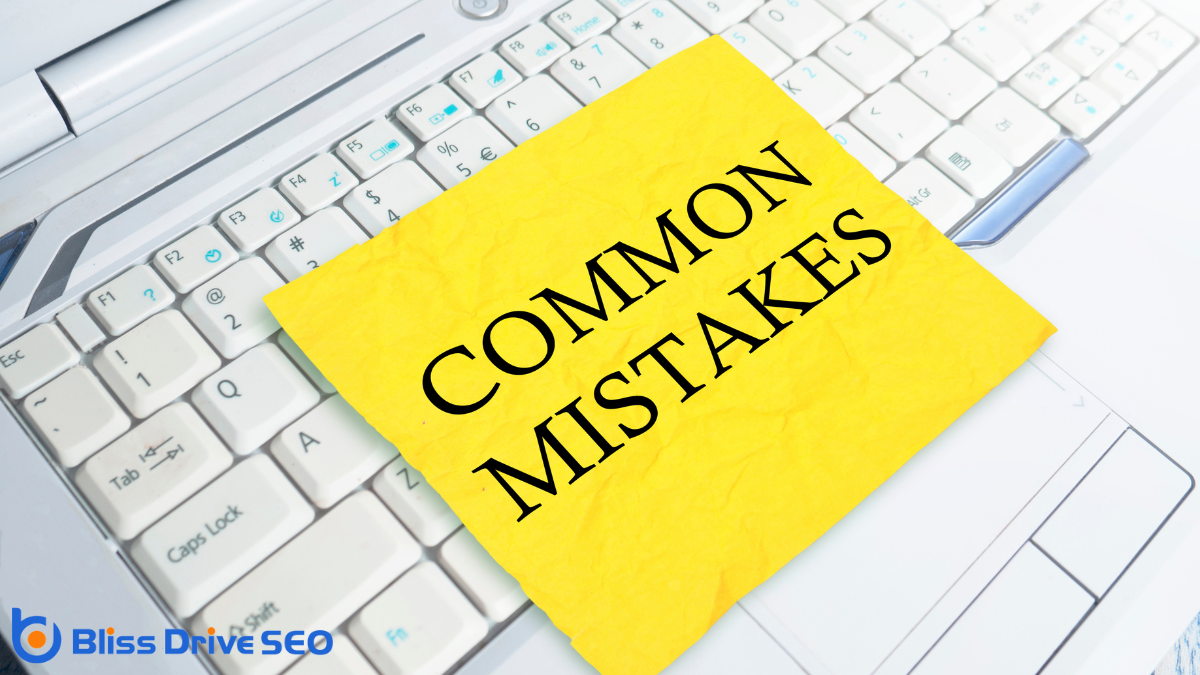
When managing multiple Google Business Profiles, it's vital to avoid creating duplicate business listings, as they can confuse customers and hurt your search rankings.
Confirm each profile has accurate and up-to-date information to maintain your credibility and guarantee customers can easily find you.
Regularly review and update your profiles to prevent any errors from slipping through the cracks.
It’s important to understand that duplicate business listings can confuse potential customers and damage your online reputation.
When you have multiple listings for the same business, it can make your information appear inconsistent, leading to mistrust.
To avoid this, follow these steps:
Beyond managing duplicate listings, verifying that your business information is accurate across all profiles is essential. Mistakes like incorrect addresses, phone numbers, and business hours can confuse customers and damage your reputation. Always double-check the details you enter on each profile.
Use consistent information across platforms to build trust and make it easier for customers to find you. Don’t overlook small errors, like misspellings in your business name or incorrect categories. These mistakes can prevent your business from appearing in relevant searches.
Regularly update your profiles when changes occur, such as moving locations or altering business hours. By maintaining accurate information, you’ll improve your visibility and verify that potential customers have the right details to reach you easily and confidently.
To optimize multiple Google Business Profiles effectively, focus on consistency and accuracy across all listings.
Begin by ensuring that your business name, address, and phone number are uniform across each profile. This enhances your credibility and visibility online.
Explore these best practices:
In managing multiple Google Business Profiles, you can maximize your business's visibility and reach. Ascertain that you meet the eligibility criteria and manage each location effectively to avoid common pitfalls. By optimizing each profile and following best practices, you’ll enhance your online presence and attract more customers. Remember, attention to detail and consistency are key. Avoid mistakes by staying informed and proactive. Embrace the benefits of multiple profiles to drive your business’s success.
Yes, mobile optimization considerably affects your local SEO. When your site is mobile-friendly, it keeps users engaged, reduces bounce rates, and improves local rankings. With mobile-first indexing, Google prioritizes the mobile version of your website for indexing, enhancing your visibility in search results. Fast loading and easy navigation on mobile boost user experience, impacting how you rank locally. Want to elevate your local presence? There's more to explore.

As the digital landscape evolves, understanding mobile optimization has become essential for success.
You're traversing a world where more users access the internet via smartphones than traditional computers. This shift means your website needs to be mobile-friendly to keep visitors engaged.
You won't want to lose potential customers because your site isn't optimized for smaller screens.
You can't ignore the importance of mobile-first indexing in boosting local SEO efforts.
Ensuring your site is mobile-friendly directly impacts local rankings and enhances the user experience for those searching on the go.
When considering the success of local SEO, mobile usability stands as an essential factor. You should guarantee your website is optimized for mobile devices to enhance user experience. People increasingly rely on their smartphones to search for local businesses, so a mobile-friendly site can make or break your visibility.
If users struggle to navigate your site on their phones, they’ll likely leave quickly, increasing bounce rates and potentially harming your SEO. A responsive design is significant, allowing your website to adapt seamlessly to different screen sizes.
Also, prioritize fast loading times, as users expect quick access to information. By focusing on mobile usability, you’re not just catering to search engines but also meeting user expectations, which directly influences your local SEO success.
While optimizing for local SEO, understanding the impact of mobile-first indexing is essential. Mobile-first indexing means Google primarily uses the mobile version of your site for ranking and indexing. If your local business isn’t mobile-friendly, you may be missing out on higher local rankings.
Search engines prioritize sites that offer seamless mobile experiences, directly affecting how your site performs in local search results. When users search for local businesses, they’re often on mobile devices. A mobile-optimized site can improve your visibility in these searches, leading to more foot traffic and conversions.
Confirm your site loads quickly, has easy navigation, and displays properly on small screens. By focusing on mobile-first principles, you increase your chances of outranking competitors in local search results.
Recognizing the significance of mobile-first indexing in local SEO leads us to an important aspect: enhancing user experience. When your site loads quickly and is easy to navigate on mobile devices, users are more likely to engage with your content. This positive interaction keeps visitors on your page longer, reducing bounce rates and improving your site’s ranking.
Ensure your site is responsive, displaying correctly on various screen sizes. Optimize images and use clear, concise content. Fast load times are essential, so consider compressing files and minimizing scripts.
Don’t forget local elements like maps and contact info, making it easier for users to find your business. By prioritizing user experience, you boost your local SEO efforts and draw more local customers to your business.
Although mobile devices have become an integral part of daily life, many websites still struggle to deliver a seamless mobile experience. If you focus on mobile optimization, you can greatly boost user experience, creating a site that’s easy to navigate and engaging.
Mobile-friendly websites load quickly and adjust to different screen sizes, guaranteeing users don’t get frustrated with slow-loading pages or awkward layouts.
Here’s how mobile optimization enhances user experience:
When it comes to local search rankings, mobile page speed plays a crucial role you can't ignore.
If your site loads slowly on mobile devices, potential customers might bounce before they even see your content.
Search engines, like Google, notice this behavior and may rank your site lower in local search results.
You want users to have a seamless experience, which means optimizing for speed.
You can't underestimate the importance of mobile usability when it comes to boosting your local visibility.
By adopting a responsive design, you guarantee that your site looks great on any device, which keeps users engaged and improves your local search rankings.
Plus, a fast page load speed enhances user experience, making it easier for customers to find and stay on your site.
In today's digital landscape, mobile usability isn't just a convenience; it's a critical factor for boosting local visibility. When your website is easy to navigate on a smartphone, you’re more likely to engage users and keep them exploring.
Search engines prioritize mobile-friendly sites, so you're more likely to rank higher in local searches. Don't underestimate the importance of this feature in drawing local customers to your business.
Consider these points to enhance your site’s mobile usability:
Embrace these strategies to improve your local SEO.
Although many factors contribute to local visibility, adopting a responsive design can considerably enhance your website's reach. When your site automatically adjusts to fit various screen sizes, you're ensuring a seamless experience for every visitor. This adaptability can boost user satisfaction, leading to increased engagement and longer site visits.
Search engines like Google prioritize mobile-friendly sites in local search results, so having a responsive design can improve your rankings.
Moreover, a consistent user experience across devices builds trust with your audience. They’re more likely to return and recommend your business if they can easily navigate your site on their mobile devices.
A key factor in enhancing local visibility is page load speed, which plays a crucial role in mobile-friendly design.
You’ve probably noticed how frustrating it is when a page takes forever to load on your phone. Potential customers feel the same way. Google considers page speed when ranking sites, so faster pages often enjoy better local search rankings.
To boost your site’s speed:
Improving page load speed not only enhances user experience but also helps you climb the local SEO ladder.
Imagine opening your phone, searching for "coffee shop near me," and finding exactly what you need within seconds. This is the power of location-based searches. By optimizing your business for local search results, you guarantee that mobile users can easily find you.
You should focus on creating accurate and up-to-date business listings. Make certain your address, phone number, and hours of operation are consistent across all platforms.
Leverage Google My Business to enhance your visibility in local searches. Encourage customers to leave reviews, as these can boost your reputation and ranking.
Additionally, use location-specific keywords in your content to target local audiences effectively. By prioritizing these strategies, you’ll connect with mobile users searching for local services, boosting your business's online presence and foot traffic.
To effectively reach local customers on mobile devices, you need to master key mobile optimization strategies. Start by guaranteeing your website is responsive and loads quickly. A slow site can frustrate users and drive them away.
Design your site with mobile users in mind, prioritizing ease of navigation and readability. Keep text concise and use clear calls to action to guide visitors smoothly through your site. Make certain your site is optimized for local searches by including location-specific keywords and updating your Google My Business profile.
Here’s a quick checklist to follow:

While implementing mobile optimization strategies is essential for enhancing local SEO, understanding their impact requires careful measurement. Start by tracking key metrics like mobile traffic, bounce rates, and conversion rates. Use tools like Google Analytics to monitor these metrics over time.
Pay attention to changes in your local search rankings and map pack appearances.
Next, gather user feedback to understand the mobile experience from a customer's perspective. Look for patterns or complaints that might suggest areas for improvement.
Also, keep an eye on your site's loading speed and mobile responsiveness, as these directly influence user satisfaction and search rankings.
Finally, compare your performance against local competitors. This'll help you identify gaps and opportunities, ensuring your mobile optimization efforts drive meaningful local search results.
To boost your local SEO, don’t overlook mobile optimization. By focusing on mobile-first indexing and guaranteeing a seamless user experience, you’ll enhance your local visibility. Fast mobile page speeds and a mobile-friendly design are vital for ranking higher in local searches. Embrace location-based searches to reach mobile users effectively. Follow best practices for mobile optimization, and regularly measure your efforts to ascertain success. By doing so, you’ll stay ahead in the competitive local market.
Structured data can boost your local SEO by clearly organizing your business's details, making them easily readable for search engines. It helps potential customers find your location, hours, and contact information quickly. By enhancing your visibility through rich snippets, you increase your chances of attracting local customers. This improves your click-through rates and online presence. If you're curious about implementing structured data to enhance your local business's visibility, there's more to discover.
Structured data is essential for enhancing your website's visibility in search engine results. By using structured data, you’re providing clear, organized information that search engines can easily understand and index.
It’s like giving search engines a roadmap to your site’s content, which helps them serve more accurate and relevant results to users. You might've heard of terms like schema markup or JSON-LD; these are formats you use to structure your data.
Imagine you’re labeling everything on your website with a tag that tells search engines exactly what each piece of information means. This process not only improves search engine comprehension but also boosts your chances of appearing in rich snippets.
Embracing structured data is a smart move for anyone looking to optimize their online presence.
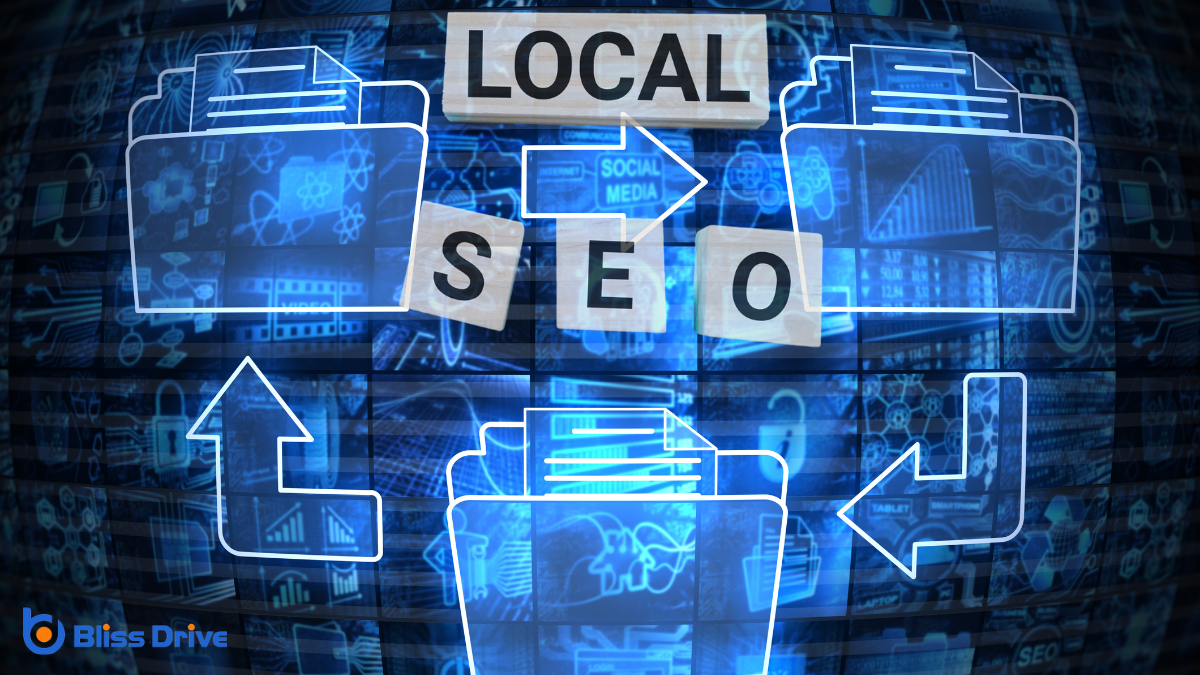
When it comes to local SEO, incorporating structured data can greatly enhance your business's online visibility. By using structured data, you help search engines understand your content better, making it easier for them to display your business details accurately in search results.
This means potential customers can quickly find your business's location, hours, and contact information. Structured data can also boost your chances of appearing in rich snippets, which are those eye-catching results with extra information.
When you're working on improving local SEO, understanding the differences between JSON-LD and Microdata is essential.
You should also consider how to effectively implement Schema.org, as it plays a significant role in optimizing your structured data.
Don't overlook RDFa; it can enhance your local SEO efforts by providing additional context to search engines.
Although both JSON-LD and Microdata are popular formats for implementing structured data, they differ with respect to integration and flexibility.
JSON-LD (JavaScript Object Notation for Linked Data) is simpler to implement as it doesn't require embedding within HTML tags. You can add it in a script tag, keeping your HTML clean and separate from your structured data. This makes JSON-LD more flexible and easier to update.
Microdata, on the other hand, is embedded directly within HTML tags. It's more intrusive as you have to modify existing HTML elements to integrate the markup. While this might seem more straightforward, it can complicate your HTML and make updates tedious.
For local SEO, JSON-LD is often recommended due to its ease of use and cleaner implementation.
Diving into Schema.org implementation can greatly enhance your site's visibility in local search results. Understanding the types of structured data formats and markup languages is essential.
Start with JSON-LD, the most recommended format by Google due to its simplicity and effectiveness. It's easy to integrate into your site's code without altering HTML elements.
Alternatively, consider Microdata, which embeds directly within HTML tags. Though it's a bit more complex, it offers robust support for structured data. Choose the format that aligns with your technical comfort level and site structure.
When implementing, verify accuracy and completeness. Validate your data using Google's Rich Results Test to catch errors.
Regularly update your schema to reflect changes in your business, making sure search engines have the latest information.
RDFa, or Resource Description Framework in Attributes, offers a powerful way to enhance local SEO by embedding structured data directly into your HTML.
By using RDFa, you can provide search engines with clear, machine-readable information about your business, like location, opening hours, and contact details. When you use RDFa, you guarantee search engines accurately index your data, making your business more discoverable to local customers.
You'll place attributes within your existing HTML tags, which makes RDFa flexible and easy to integrate without altering your website's design.
This integration can improve your site's visibility in local searches, driving more traffic. Adopt RDFa to gain a competitive edge in local SEO, guaranteeing your business stands out in relevant search results.
To boost your local SEO, using structured data types like Business Information Markup and Event Schema is essential.
Business Information Markup guarantees search engines understand your business's key details, improving visibility.
Event Schema lets you highlight events, making them more accessible to potential attendees searching locally.
When it comes to enhancing local SEO, business information markup plays a crucial role by ensuring search engines understand your business details.
You can use structured data to clearly define essential information like your business name, address, phone number, and operating hours.
This markup helps search engines display your business correctly in local search results, increasing your visibility.
Leveraging event schema is a powerful way to boost your local SEO, especially if your business hosts events. When you use event schema, search engines can better understand and display your event details, like name, date, location, and ticket availability.
This makes it easier for potential attendees to find your events in search results, and it can improve your visibility on platforms like Google Search and Maps.
You should verify that your event schema is correctly implemented and up-to-date. Include all relevant details so search engines can accurately present your events.
This structured data helps you stand out, particularly in local searches where people are looking for activities nearby. By doing so, you can attract more attendees and enhance your overall online presence.

While enhancing your website's visibility, implementing structured data is an important step you shouldn't overlook.
Begin by identifying the most relevant schema types for your business. For instance, if you run a restaurant, consider using schemas like "Restaurant" or "LocalBusiness." These schemas help search engines understand and present your content accurately.
Next, add the appropriate markup to your website's HTML. You can use JSON-LD, a popular format that's easy to implement and update. Tools like Google's Structured Data Markup Helper can guide you through the process.
It's essential to integrate structured data correctly to guarantee that search engines can read it effectively. This effort can greatly boost your site's local SEO, making it more discoverable to potential customers.
After implementing structured data on your website, it's important to confirm that it's both accurate and functional.
Start by using Google's Structured Data Testing Tool. It helps you validate your markup and identify any errors or warnings. Simply enter your webpage URL or HTML code, and it’ll pinpoint issues needing correction.
Pay close attention to common errors like missing required fields or incorrect data types. Once you've fixed any issues, re-test to confirm everything's resolved.
Additionally, you can use the Rich Results Test to see if your data qualifies for enhanced search results.
Structured data plays an essential role in elevating your local SEO performance by providing search engines with clear, organized information about your business.
To effectively monitor your SEO performance, use tools like Google Search Console to track changes in impressions and clicks. These metrics help you understand how well your structured data is working.
Regularly check your website’s traffic patterns and keyword rankings to spot any trends or issues early on. It’s vital to keep an eye on customer reviews and local listings, ensuring all data remains accurate and up-to-date.
By leveraging structured data, you can greatly boost your local SEO efforts. Understanding and implementing the right types of structured data helps search engines better comprehend your website's content, making it easier for local customers to find you. Use tools to test and validate your data, ensuring it’s accurate and effective. Keep an eye on your local SEO performance, and make adjustments as needed. With structured data, you’re setting your business up for local success.
Local Business Schema is a structured data markup that helps search engines understand your business's important details like name, address, phone number, and services offered. Using this schema improves your visibility in search results by making your information more accessible and informative to potential customers. It's essential for boosting your local SEO, ensuring your business stands out locally. For those interested, there's more to discover about how it enhances your online presence.
When you’re diving into the world of Local Business Schema, it’s crucial to grasp the fundamental concepts. You’re fundamentally dealing with a structured data format that helps search engines understand your business better.
This schema is a type of vocabulary used on websites to provide detailed information about your business, such as its name, address, phone number, and the services you offer. By implementing this, you’re aiding search engines like Google in displaying more informative and accurate results for users.
You’re not just enhancing search visibility but also improving user experience. When potential customers search online, they’re more likely to find you easily if your business details are clearly defined.

The backbone of LocalBusiness Schema Markup lies in its key components, ensuring your business information is correctly structured and easily accessible by search engines.
You should focus on essential elements like the business name, address, and phone number (NAP). Consistency in these details helps search engines verify your business's legitimacy.
Don't forget to include the opening hours, which provide valuable information for potential customers.
Also, the type of business you run is vital; it helps categorize your services, enhancing search visibility.
Incorporating your website URL and social media profiles strengthens your online presence.
Finally, consider adding customer reviews and ratings, as they build trust and improve engagement.
After understanding the key components of LocalBusiness Schema Markup, the next step is putting this knowledge into practice by implementing it on your website.
Start by identifying the pages representing your business. Use JSON-LD format, as it's Google’s recommended method. Add the script to the head section of your HTML. Define essential properties like "@type": "LocalBusiness", "name", "address", and "telephone".
Guarantee accuracy and consistency with your existing business details. Use Google's Structured Data Testing Tool to verify your markup. Input your URL or code snippet to check for errors or improvements.
Regularly update the schema as your business evolves. This approach enhances search engines' understanding of your business, making it easier for potential customers to find you online.
Although often overlooked, implementing LocalBusiness Schema can greatly boost your local SEO efforts. By structuring your business data in a way that search engines understand, you enhance your visibility in local search results. This leads to higher rankings and more clicks from potential customers in your area.
When you use LocalBusiness Schema, you're giving search engines the precise information they need to feature your business prominently.
Here's how it impacts local SEO:

When you want to optimize your Local Business Schema markup effectively, focus on providing complete and accurate information about your business. Guarantee you include essential details like your business name, address, phone number, and operating hours.
Use consistent formatting, especially for your NAP (Name, Address, Phone Number) details, across all platforms. It helps search engines verify your information easily.
Integrate reviews and ratings, as they enhance credibility and attract potential customers. Don’t forget to add your business category, as it helps search engines understand your business type.
When possible, include additional details like price range, accepted payment methods, and social media profiles. Regularly update this information to reflect any changes. Staying current guarantees your schema markup delivers the most accurate data to search engines.
By understanding and implementing the LocalBusiness schema, you'll enhance your website's visibility and improve local SEO. Focus on key components like business name, address, and contact details to guarantee search engines accurately display your business information. Proper implementation helps potential customers find you easily, boosting foot traffic and sales. Follow best practices and regularly update your schema markup to stay competitive. Embrace these steps, and watch your local presence grow stronger and more effective.
You might wonder why local SEO has become essential for so many different types of businesses. It's not just the small, local shops that benefit from it. Imagine a bustling restaurant down the street or a real estate agent who needs to connect with clients in your neighborhood. Even healthcare professionals or larger corporations with multiple locations are getting in on the action. But what exactly makes local SEO such a powerful tool for these diverse groups, and how do they tailor their strategies to capture your attention? Let's explore how they use it to stand out in your local searches.

Small businesses are the backbone of local SEO, leveraging it to attract nearby customers and drive foot traffic. You've probably noticed how important it is for your small business to stand out in local searches. When customers search for a service or product near them, you want your business to be among the top results. This is where local SEO really shines. It helps guarantee your business appears prominently in search results, making it easy for customers to find you.
To maximize local SEO, you've got to focus on a few key strategies.
First, claim and optimize your Google My Business listing. Make sure all your information, like address, phone number, and hours of operation, is accurate. Encourage satisfied customers to leave positive reviews, as these can greatly boost your visibility. Also, make sure your business name, address, and phone number are consistent across all online platforms.
Don't forget to include local keywords in your website content. This helps search engines understand your relevance to specific local searches. By doing this, you increase your chances of capturing the attention of potential customers who are searching for the services or products you offer.
If you own a restaurant or cafe, local SEO is essential for attracting nearby diners who are searching for a place to eat. By enhancing your online visibility through local search results, you'll increase the chances of people finding your business. This strategy can greatly boost foot traffic, turning online searches into actual customers walking through your doors.
Start by securing your business, which is listed on Google My Business. This listing is a powerful tool that lets potential customers know where you are and your hours and even see reviews from other diners. Encourage happy customers to leave reviews; they can significantly enhance your appeal.
Don't forget to use local keywords in your website content. Mention your neighborhood and any nearby landmarks to help search engines associate your business with the local area.
Updating your menu and any special offers on your website keeps diners informed and engaged.
Consistently enhancing your online visibility is essential for restaurants and cafes aiming to attract more customers. When potential diners search for a place to eat, you want your business to be one of the first they see. Using local SEO strategies, you can improve your online presence and guarantee that your restaurant or cafe appears prominently in search results.
Start by optimizing your Google My Business profile. Make sure your address, phone number, and business hours are accurate. Upload high-quality photos of your menu items and the dining environment to give potential customers a taste of what you offer. Encourage satisfied customers to leave positive reviews, as reviews play a significant role in search rankings.
Keyword optimization is another critical factor. Use keywords that reflect what your customers are searching for, like "best brunch near me" or "cozy cafe downtown." Incorporate these phrases naturally into your website content, meta descriptions, and social media posts.
Don't forget about local directory listings. Guarantee your restaurant or cafe is listed on popular platforms like Yelp and TripAdvisor. Consistent information across these platforms increases your credibility and helps search engines trust your business, ultimately boosting your online visibility.
A key strategy for boosting foot traffic to your restaurant or cafe is to leverage local SEO effectively. By optimizing your online presence, you can guarantee that when locals search for a bite to eat or a cozy spot for coffee, your business pops up at the top of their search results.
Start by claiming your Google My Business listing. Make sure all information is accurate, including your address, phone number, and operating hours. Upload enticing photos of your dishes or ambiance to attract potential customers.
Encourage satisfied customers to leave positive reviews, as these bolster your reputation and influence new patrons. Use local keywords in your website's content that reflect what people in your area might be searching for.
For instance, if you're in Portland and specialize in vegan desserts, phrases like "vegan desserts in Portland" can help draw in those specific audiences.
Don't overlook social media. Engage with your community by posting updates, promotions, or behind-the-scenes content. It keeps your audience informed and engaged, driving more people to your door.
As a retail store owner, you can leverage local SEO to boost foot traffic to your physical location. By optimizing your online presence, you'll enhance your store's visibility to local customers searching for products you offer. This strategy guarantees that potential buyers can easily find and visit your store, driving sales and growth.
For retail stores, driving in-store traffic is fundamental to thriving in a competitive market. You need to attract customers not just online but also through your physical doors. To do this effectively, local SEO plays an important role.
By optimizing your online presence for local searches, you can make sure that potential customers find you easily when they search for products or services you offer in your area.
Start by making sure your Google My Business listing is accurate and up-to-date. This helps customers find your store location, operating hours, and contact information quickly. Encourage satisfied customers to leave positive reviews, as these can greatly influence new customers' decisions to visit your store.
Furthermore, using location-based keywords in your website content helps search engines connect local customers to your store. Highlight special promotions or in-store events on your social media channels to attract more foot traffic.
To stand out in the bustling retail landscape, improving your local visibility is important. With so many competitors vying for attention, making your store easy to find for nearby customers can greatly boost foot traffic and sales. Local SEO is your key to achieving this. By optimizing your online presence, you guarantee customers in your area find you when they're searching for products or services like yours.
Start by claiming and updating your Google My Business listing. This is a vital step because it helps your business appear in local search results and on Google Maps. Make sure your information—like address, phone number, and hours—is accurate, and add photos to attract more interest.
Don't forget about customer reviews. Encourage happy customers to leave positive reviews and respond to them promptly. This builds trust and enhances your reputation.
Also, consider local keywords. Integrate phrases like "best [your product] in [your city]" into your website content to improve search engine rankings.
When you think about local SEO, service providers often stand to gain the most by harnessing its power. Whether you're a plumber, electrician, or caterer, tapping into the local market can significantly boost your business. Local SEO helps you appear prominently in search results when potential customers look for services in your area. By optimizing your online presence, you're making sure your business is at the top of people's minds when they need your services.
Imagine someone in your neighborhood desperately needing a quick fix for a leaky faucet. They'll likely search for a "plumber near me" on their phone. If you've invested in local SEO, your business has a higher chance of showing up in those essential search results. This visibility is crucial because it connects you directly with those who are ready to hire.
Moreover, using Google My Business, you can showcase your services, display customer reviews, and provide important details like your operating hours. This transparency builds trust and encourages potential clients to reach out.
Moving through the competitive world of real estate can be tricky, but local SEO can give real estate agents a significant advantage. By optimizing your online presence, you can guarantee potential buyers and sellers find you first when they search for properties or agents in your area. Local SEO helps you appear in search results when someone nearby is looking for real estate services, increasing your chances of connecting with clients who are ready to move forward.
To get started, make sure your Google My Business profile is complete and accurate. This includes your address, phone number, hours, and any other relevant details. Encourage satisfied clients to leave positive reviews, as these can boost your credibility and enhance your ranking in search results.
It's also important to use local keywords on your website and in your content, such as "homes for sale in [Your City]" or "[Your City] real estate agent."
Additionally, consider creating blog posts or videos about the local market, neighborhood guides, or home-buying tips. This not only provides useful information to potential clients but also boosts your visibility in local search results, giving you an edge over competitors.
Real estate agents aren't the only professionals who can reap the benefits of local SEO—healthcare professionals also stand to gain immensely. As a healthcare provider, you understand the importance of connecting with your local community. Local SEO is a powerful tool that can help you achieve this by improving your online visibility in your area. When potential patients search for medical services near them, a well-optimized local SEO strategy ensures that your practice appears at the top of search results.
To effectively use local SEO, start by claiming and optimizing your Google My Business listing. Make sure your practice's name, address, and phone number are consistent across all online platforms. Encourage satisfied patients to leave positive reviews, as these can greatly boost your local rankings.
Additionally, create content that addresses common health concerns in your community, which can attract more local traffic to your website.
Expansion is the hallmark of multi-location corporations, and local SEO can be a game-changer for these businesses aiming to dominate multiple markets. If you operate in several locations, you know how essential it is to reach customers in each community. Local SEO helps you connect with local audiences by making sure your business appears in search results tailored to each area.
You might wonder how to manage SEO for many locations. Start by creating a Google My Business profile for each one. Confirm that each profile contains accurate and consistent information, like addresses, phone numbers, and business hours. This consistency builds trust with search engines and potential customers alike.
Another effective strategy is to develop location-specific pages on your website. Include unique content relevant to each area, such as local news, events, or testimonials from clients in that location. This approach helps search engines understand the relevance of your business to local searches.
Don't forget to encourage customer reviews for each location. Positive reviews enhance your credibility and influence local ranking. Local SEO isn't just about getting found; it's about establishing a strong local presence and building relationships with communities across your multiple locations.
While multi-location corporations harness local SEO to expand their reach, nonprofit organizations can also greatly benefit from it. By optimizing your nonprofit's online presence for local search, you can increase awareness, attract volunteers, and secure funding—all of which are crucial for your mission's success. Local SEO helps you connect with community members who are already inclined to support causes like yours.
To get started with local SEO for your nonprofit, consider these strategies:
You've seen how local SEO is a game-changer for various businesses and organizations. By optimizing for local search, small businesses, restaurants, and retail stores can attract nearby customers and boost foot traffic. Service providers, real estate agents, and healthcare professionals can connect with clients more effectively. Even multi-location corporations and nonprofits can enhance their reach and engagement. Embrace local SEO to make sure you're visible to your community and ready to meet their needs.
You're probably wondering if local SEO is all about what happens on your website. While it might seem like optimizing your site is the main focus, there's a lot more happening beyond those borders. Off-page strategies like securing backlinks and engaging on social media play a pivotal role in boosting your local presence. But how exactly do these off-page efforts impact your business's visibility in local searches? And what about the influence of online reviews and local citations? Let's explore how these elements come together to shape a robust local SEO strategy.
Understanding the basics of local SEO is pivotal for any business aiming to enhance its online presence in a specific geographical area. You need to grasp the core components that make up local SEO, which mainly focuses on optimizing your online presence to attract more business from relevant local searches. This involves ensuring your business information is consistent and accurate across various online directories, like Google My Business, Yelp, and Bing Places.
You should start by claiming and optimizing your Google My Business listing. This step is essential because it enhances your visibility in local search results and helps your business appear in Google Maps. Make sure your business name, address, and phone number (NAP) are consistent across all platforms. Additionally, selecting the right categories and uploading high-quality images can significantly influence how potential customers perceive your business.
You'll also want to pay attention to online reviews. Encourage satisfied customers to leave positive feedback, as these reviews impact how your business ranks locally.
Moreover, focus on generating locally relevant content on your website. By incorporating local keywords and creating blog posts about local events or news, you can engage your target audience and improve your site's local search ranking.
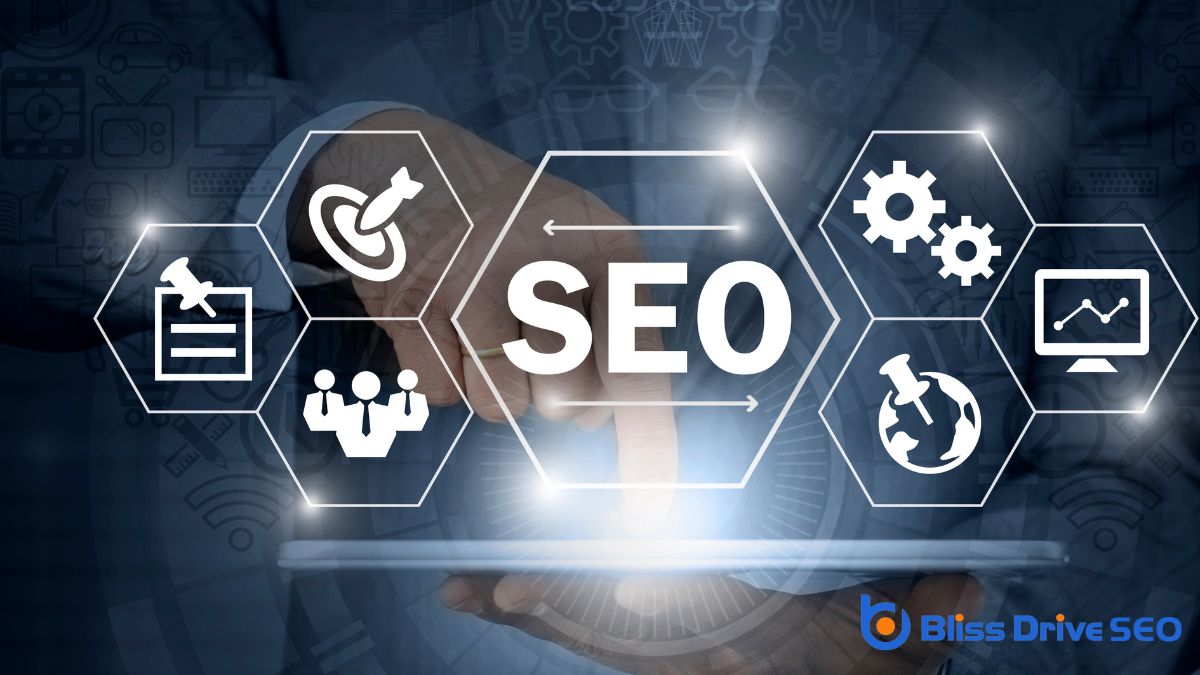
When you focus on off-page SEO, you're boosting your site's authority by building quality backlinks. These links not only drive traffic but also enhance your brand's visibility across various platforms. By prioritizing off-page efforts, you position your business as a trusted and recognized player in your local market.
In the ever-evolving world of digital marketing, off-page SEO is essential, particularly through building quality backlinks. You're probably wondering why backlinks matter so much. Well, they act as votes of confidence from other websites, signaling to search engines that your site is trustworthy and authoritative. When reputable sites link back to yours, it boosts your site's credibility and can improve your search rankings.
To build quality backlinks, focus on creating valuable content that others will want to reference. Think about infographics, insightful blog posts, or unique research that your audience finds useful. Share your content across platforms to increase its visibility, making it easier for others to discover and link to it.
Another effective strategy is guest blogging. By contributing articles to well-regarded sites in your niche, you can include a link back to your site, driving both traffic and authority.
Don't forget about local directories and industry-specific forums where you can participate and share your expertise.
To truly enhance your brand's visibility, off-page SEO plays an important role in the digital marketing landscape. It's not just about what you do on your website but also how your brand is perceived elsewhere. By focusing on off-page strategies, you can boost your brand recognition and authority, which in turn draws more potential customers to your doorstep.
Off-page SEO involves actions like acquiring quality backlinks, engaging on social media, and earning mentions in reputable outlets. These efforts increase your brand's credibility and signal to search engines that your business is trustworthy and relevant. When other websites link to yours, it shows that your content is valuable, enhancing your visibility across the internet.
Moreover, participating in local community events and getting featured in local online directories can greatly impact your brand's reach. Engage actively with your audience on social media platforms. Respond to comments and queries to build relationships and trust, which are important for brand loyalty.
When you're focusing on local SEO, high-quality backlinks play an essential role in boosting your site's visibility. By building local link networks, you can connect with businesses and organizations in your area, strengthening your online presence.
Prioritizing quality over quantity guarantees that your links are credible and beneficial for your search engine rankings.
You've likely heard that backlinks are the backbone of any effective local SEO strategy, and it's true. However, not all backlinks are created equal. Quality links can significantly impact your local search engine rankings, while poor-quality ones can harm your efforts. So, why are quality links so important?
Harnessing the power of local link networks is vital for boosting your local SEO efforts. When you build a network of links from local businesses, directories, or community organizations, you enhance your site's credibility and visibility. Search engines view these backlinks as endorsements, demonstrating your business is a trusted local entity.
To start, focus on acquiring links from reputable sources like local news sites, chamber of commerce pages, or neighboring businesses with an online presence.
You should also consider collaborating with local bloggers or influencers. When they mention your business, it helps drive traffic and improves your search engine rankings.
Don't underestimate the value of participating in local events or sponsorships; these often lead to online mentions and links that can greatly benefit your SEO.
It's essential to maintain the quality of your backlinks. Confirm the links come from relevant, high-authority sites, as search engines penalize low-quality or spammy links. Regularly monitor your link profile to make sure it's helping, not hindering, your SEO strategy.
In today's digital landscape, online reviews have a significant impact on local SEO and a business's reputation. They play a pivotal role in how search engines perceive your business and influence potential customers' decisions. You're probably wondering how these reviews affect your local SEO efforts. Here's a quick breakdown:
When focusing on boosting your local SEO, local citations and listings are essential components that shouldn't be overlooked. These are mentions of your business name, address, and phone number (NAP) on various online platforms. Think of them as digital footprints that help search engines authenticate your business's legitimacy and relevance.
The more consistent and accurate your citations, the more trust you build with search engines, which can lead to better local search rankings.
To start, make sure your business is listed on major directories like Google My Business, Yelp, and Bing Places. But don't stop there—explore local directories specific to your industry or area. Consistency is key, so double-check that your NAP details match across all platforms. Discrepancies can confuse search engines and harm your visibility.
Additionally, take advantage of niche directories relevant to your field. For instance, if you're a restaurant owner, being listed on food review sites can enhance your digital presence. Remember, each citation and listing acts like a vote of confidence, amplifying your visibility to potential customers.

Building on the solid foundation of local citations and listings, you can further enhance your local SEO through the strategic use of social media. With the right approach, social media platforms become powerful tools to boost your visibility and engagement within your local community. Here's how you can leverage social media effectively:
Your website's on-page SEO contributions play a vital role in improving your local search rankings and visibility. By optimizing the elements on your site, you make it simpler for search engines to grasp what your business is about and how it's related to local queries.
Begin with title tags and meta descriptions. They should contain local keywords that depict your business's core services and location. This straightforward step assists search engines in linking your site with pertinent local searches.
Afterward, consider your header tags. Make certain they're organized logically, incorporating keywords organically. This not only enhances SEO but also enriches user experience by rendering your content more easily accessible.
Moreover, don't underestimate the significance of consistently including your business's name, address, and phone number (NAP) throughout your website. This uniformity establishes trust with search engines and guarantees potential customers can locate you effortlessly.
While optimizing on-page elements is key, crafting localized content takes your local SEO efforts a step further. When you create content that's tailored to your local audience, you build a stronger connection with them and improve your chances of ranking higher in local search results. To get started, focus on understanding your community and its unique needs. Here's how you can create effective localized content:
Meta tags might seem like a small piece of the SEO puzzle, but they're vital for improving your website's visibility in local search results. Think of meta tags as your site's first impression. Search engines use them to understand your content and display it to users. By optimizing these tags, you can enhance your site's relevance to local queries.
First, focus on your title tag. It's important to include your primary keyword and location here. This tells search engines exactly what your page is about and where you operate.
For instance, if you're a florist in Austin, a title tag like "Best Florist in Austin – [Your Business Name]" works wonders.
Next, optimize your meta description. While it doesn't directly affect rankings, it influences click-through rates. Craft a compelling description that includes your keyword and location, encouraging users to click. Mention any unique offerings or promotions to entice potential customers.
Lastly, don't neglect header tags. Although they're part of on-page content, structuring them with local keywords can strengthen your SEO efforts. Clear and well-organized headers help users and search engines navigate your site more effectively, boosting your local presence.
Incorporating local SEO off-page strategies is essential for boosting your business's online presence. By focusing on building quality backlinks, engaging in local directories, and leveraging guest blogging, you'll enhance your site's authority and credibility. These efforts, combined with other strategies like managing online reviews and optimizing your social media presence, help establish you as a trusted local player. Remember, effective off-page SEO attracts more local customers and enhances your search engine rankings noticeably.
When you're looking to enhance your local business's online visibility, understanding Google Local SEO is essential. It starts with claiming your Google My Business listing, but that's just the beginning. Ensuring your business information is precise and uniform can greatly influence your search rankings. But how do you effectively gather customer reviews and use local keywords to your advantage? And what role do local backlinks play in this intricate process? Each step requires meticulous attention to detail, and mastering these elements can determine the success or failure of your local SEO strategy. Ready to explore the finer details?
Taking the first step towards improving your local SEO, claiming your Google My Business (GMB) listing is necessary. It's your direct line to appear in local search results and on Google Maps. By claiming your GMB listing, you'll gain control over how your business information appears to potential customers searching for similar services. Without this essential step, you risk being overshadowed by competitors who've already staked their claim.
To claim your GMB listing, start by visiting the Google My Business website. Use your Google account to log in or create one if you don't have it yet. Search for your business name to see if a listing already exists. If it does, follow the prompts to claim it. Google might require verification to guarantee you're the rightful owner, typically through a postcard mailed to your business address.
Once you've claimed your listing, you can begin managing your business's online presence. This includes uploading photos, responding to reviews, and ensuring your contact details are accurate.
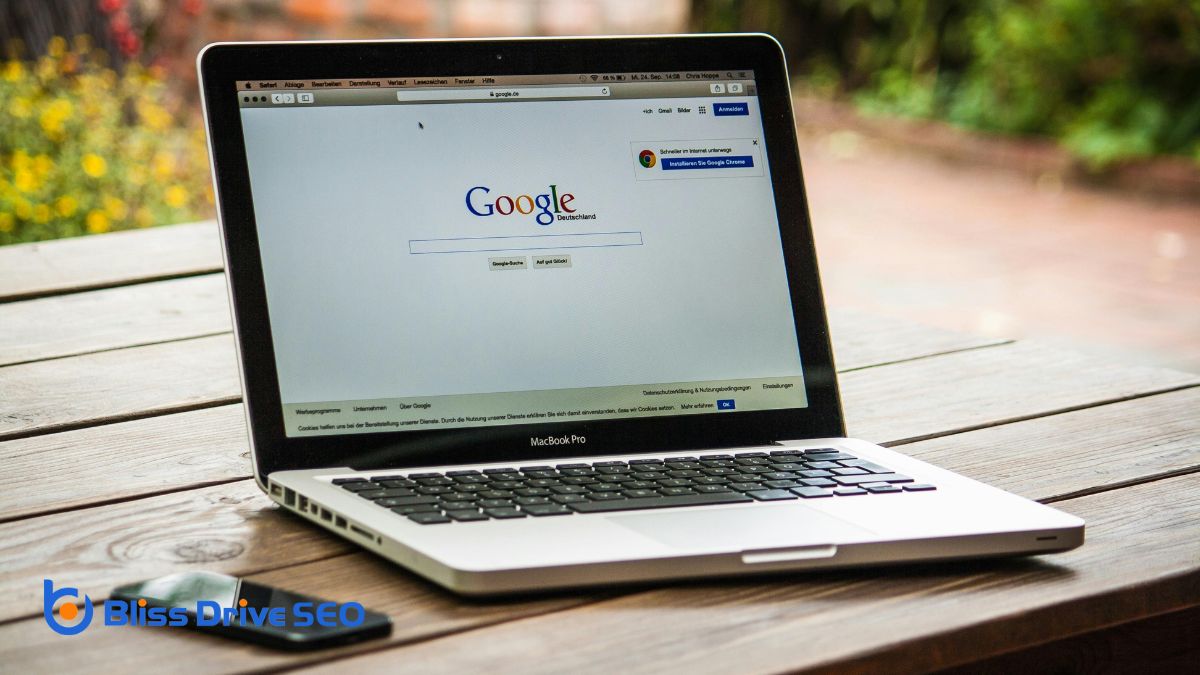
With your Google My Business listing claimed, the next step is to optimize your business information for maximum visibility and customer engagement. Start by ensuring your business name, address, and phone number (NAP) are consistent across all platforms. Inaccurate details can confuse potential customers and hurt your local SEO. Double-check everything for accuracy and uniformity.
Next, select the most relevant categories for your business. Google allows you to choose primary and secondary categories, so make sure you select ones that accurately describe your services or products. This helps Google understand your business better and match you with relevant searches.
Craft a compelling business description. Use clear, concise language to highlight your unique selling points and include relevant keywords naturally. This description should reflect what makes your business stand out and entice potential customers to learn more.
Don't forget to upload high-quality photos. Images of your storefront, products, and services not only make your listing more appealing but also give potential customers a sense of what to expect. Regularly update these images to keep your listing fresh.
Customer reviews play an essential role in enhancing your Google Local SEO. They're not just about boosting your reputation; they actually impact how your business ranks in local search results. When potential customers search for services you offer, reviews can be the deciding factor in choosing you over competitors. Google's algorithms consider the quantity and quality of reviews, so encouraging customers to leave positive feedback is critical.
Start by making it easy for customers to leave reviews. Provide clear instructions or direct links to your Google Business Profile in follow-up emails or on receipts. Don't be shy about asking satisfied customers to share their experiences. A simple request can go a long way in gathering valuable reviews.
Responding to reviews, whether positive or negative, shows you value customer feedback. It also demonstrates that you're engaged and committed to improvement. This interaction not only builds trust but also signals to Google that your business is active and customer-focused.
To boost your Google Local SEO effectively, using local keywords is essential. These keywords are terms and phrases that relate directly to your business's location. When potential customers are searching for services or products, they're likely to include location-based queries. By integrating local keywords into your website's content, you make it easier for search engines and customers to find you.
Start by identifying the local keywords that matter most to your business. Think about the specific terms people use when they're looking for what you offer in your area. Use tools like Google's Keyword Planner to find popular search terms related to your business and location. Don't forget to include variations, such as neighborhood names or landmarks.
Once you've got your list, incorporate these keywords naturally into your website's pages, blog posts, and meta tags. Use them in headings, body text, and image alt text, but avoid overstuffing. It's about creating content that's useful and relevant to your audience.

Building local backlinks is a cornerstone of effective Google Local SEO. By securing links from local websites, you communicate to search engines that your business is relevant and trusted within your community.
Start by connecting with local businesses or organizations. Reach out to them for opportunities to guest blog, collaborate on events, or be featured in a local directory. These partnerships can earn you valuable backlinks.
Consider sponsoring local events or charities. In return, these organizations often provide a link back to your website. This not only boosts your online presence but also strengthens community ties.
Don't forget to list your business in local online directories, such as Yelp or the Chamber of Commerce website. These platforms often carry significant authority, and a link from them can enhance your local SEO.
Additionally, engage with local bloggers or influencers. Building relationships with these individuals can lead to them naturally mentioning or linking to your business in their content.
Always aim for quality over quantity; a few authoritative local backlinks can be more beneficial than numerous low-quality ones. By strategically building local backlinks, you'll increase your visibility and credibility in your area.
To boost your local SEO, start by claiming your Google My Business listing and verify all your business information is accurate and consistent. Don't forget to select relevant categories and create an appealing business description. Encourage your customers to leave positive reviews and always respond to them. Use local keywords organically in your website content and focus on building local backlinks from reputable sources. By following these steps, you'll greatly enhance your local search rankings.